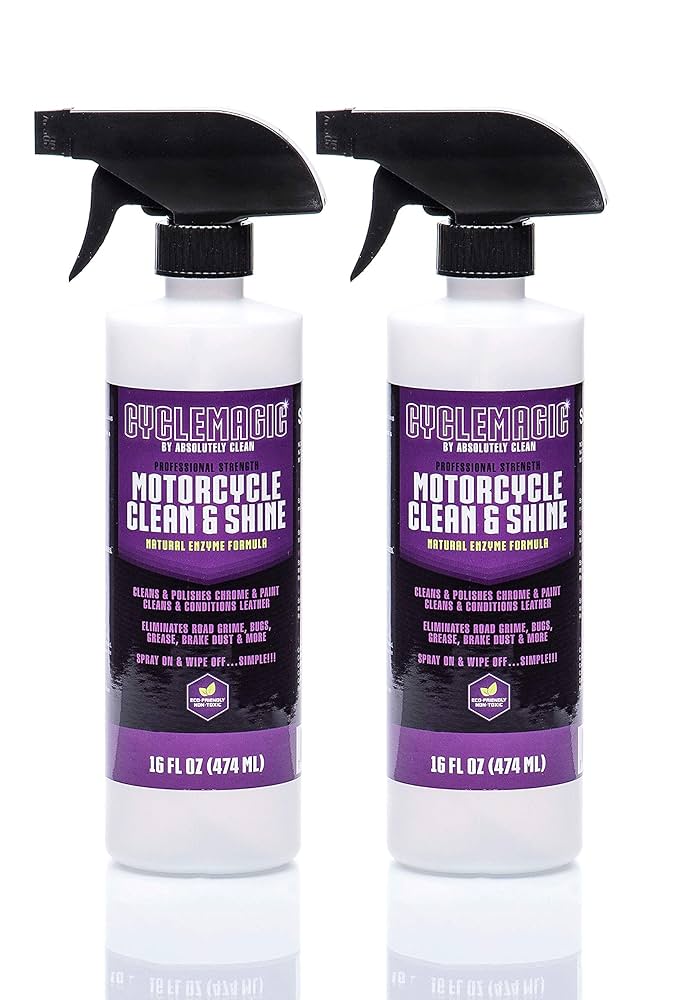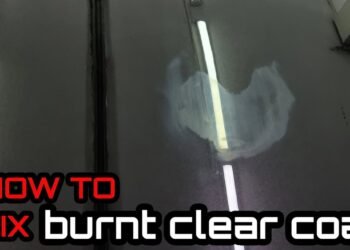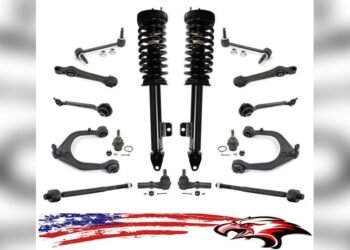When it comes to keeping your chrome shining and spotless, you might have wondered: can you use brake cleaner on chrome surfaces? If you’ve tried cleaning your wheels or other chrome parts and didn’t get the results you hoped for, you’re not alone.
Brake cleaner is a powerful solvent made for tough brake components, but it’s not always the best choice for chrome. Using it the wrong way can cause damage or leave you with more work. You’ll discover exactly how brake cleaner interacts with chrome, what to avoid, and the safest tips to make your chrome gleam without risk.
Ready to protect your ride’s shine and get the cleaning results you want? Keep reading—you’ll learn the essential do’s and don’ts that every car owner needs to know.
Brake Cleaner Basics
Brake cleaner is an essential product for vehicle maintenance. It removes dirt, grease, and brake dust from metal parts. Clean brakes work better and last longer.
This cleaner is strong and made for tough grime on brake components. Using it properly keeps your vehicle safe and efficient.
What Brake Cleaner Does
Brake cleaner dissolves oil, grease, and brake dust quickly. It evaporates fast without leaving residue. This helps prevent brake noise and wear.
It cleans calipers, rotors, drums, and other metal parts. It also removes grease from engine parts and tools. Using brake cleaner improves brake performance and safety.
Types Of Brake Cleaners
There are two main types: chlorinated and non-chlorinated cleaners. Chlorinated cleaners work fast and remove tough grime. They are toxic and need careful use.
Non-chlorinated cleaners are safer and less harmful to the environment. They take a bit longer to work but still clean well. Choose the type based on your needs and safety precautions.

Credit: www.amazon.com
Chrome And Brake Cleaner
Chrome surfaces add shine and style to vehicles and accessories. Cleaning them properly keeps their look bright and new. Brake cleaner is a common product used in auto maintenance. It removes grease, oil, and brake dust from metal parts. Understanding how brake cleaner interacts with chrome is important for safe use.
Is Brake Cleaner Safe On Chrome?
Brake cleaner can be safe on chrome if used carefully. Most brake cleaners contain strong solvents. These solvents dissolve grease and dirt quickly. Chrome is a metal surface with a shiny, protective coating. The coating can sometimes react to harsh chemicals.
Non-chlorinated brake cleaners are usually safer for chrome. Chlorinated types may cause damage or dull the shine. Always test brake cleaner on a small, hidden area first. Avoid letting the cleaner sit on chrome for long periods.
Effects On Chrome Surfaces
Brake cleaner removes tough grime from chrome efficiently. It can dissolve brake dust and oil that water or soap can’t. But repeated use or long exposure may harm the chrome layer. The protective finish might fade or peel over time.
Spraying brake cleaner directly onto chrome can cause spotting or discoloration. Wiping the surface quickly and rinsing with water helps protect the chrome. Using a microfiber cloth reduces scratches after cleaning. Proper care keeps chrome surfaces shiny and free from damage.
Materials To Avoid
Brake cleaner is a strong solvent ideal for cleaning metal brake parts. It removes grease, oil, and dirt efficiently. Despite its power, it can harm some materials. Avoid using brake cleaner on certain surfaces to prevent damage. Knowing these materials protects your vehicle and tools.
Rubber And Brake Cleaner
Brake cleaner damages rubber by making it brittle. It causes cracks and breaks in tires, hoses, and seals. Repeated exposure weakens rubber parts and shortens their life. Always shield rubber components from brake cleaner spray.
Plastic And Painted Surfaces
Plastic parts can warp or crack when exposed to brake cleaner. The solvent attacks the plastic structure and causes brittleness. Painted surfaces lose their color or finish due to brake cleaner. It strips paint, leaving dull or damaged spots. Wipe off any accidental spray immediately to save the paint.
Electronics And Welding Surfaces
Brake cleaner harms electronics by damaging circuits and connections. It can cause shorts or permanent malfunctions. Avoid spraying it near electrical parts or devices. Chlorinated brake cleaners should not be used on surfaces before welding. Heating these chemicals releases toxic phosgene gas. Always let brake cleaner fully evaporate before welding metal parts.
Safe Usage Tips
Using brake cleaner on chrome requires care to protect the shiny surface and ensure safety. Follow these safe usage tips to clean effectively without damage. Proper steps reduce risks and keep your chrome looking great.
Application Guidelines
Spray brake cleaner directly onto a clean cloth, not the chrome. Wipe gently to remove grease and brake dust. Avoid soaking the surface to prevent damage. Use small amounts and repeat if needed. Always test on a small area first.
Ventilation And Protective Measures
Use brake cleaner in a well-ventilated space or outdoors. The fumes can be harmful if inhaled in closed areas. Wear gloves to protect your skin from chemicals. Eye protection is also important to avoid irritation. Keep the cleaner away from flames or sparks.
Avoiding Overspray Damage
Cover nearby rubber, plastic, and painted parts before spraying. Overspray can cause these materials to crack or discolor. Use painter’s tape or plastic wrap to shield sensitive areas. Spray carefully and hold the can at a proper distance. Wipe off any accidental overspray immediately.
Cleaning Chrome Wheels
Chrome wheels add a bright, shiny look to any vehicle. Dirt, brake dust, and grime can dull their shine quickly. Using the right cleaner keeps them sparkling without damage. Brake cleaner works well on chrome but requires care. It removes tough brake dust and grease effectively.
Cleaning chrome wheels restores their shine and protects the metal. A careful approach prevents scratches and discoloration. Follow a simple process to get great results safely.
Step-by-step Cleaning Process
Start by rinsing the wheels with water to remove loose dirt. Spray brake cleaner evenly on the chrome surface. Let it sit for a few seconds but do not let it dry. Use a soft brush or cloth to scrub gently. Focus on areas with brake dust buildup. Rinse the wheels thoroughly with water to remove cleaner residue. Dry the wheels with a clean microfiber towel to avoid water spots. Repeat if necessary for stubborn grime.
Common Mistakes To Avoid
Do not spray brake cleaner on hot wheels as it can cause damage. Avoid using it on rubber, plastic, or painted parts near the wheels. Do not let the cleaner dry on the surface as it may leave marks. Using harsh brushes can scratch the chrome finish. Always wear gloves and work in a ventilated area to protect your skin and lungs.

Credit: meguiarsdirect.com
Brake Cleaner Alternatives
Brake cleaner is effective for removing grease and grime from metal surfaces. But it can be harsh on chrome and other delicate finishes. Many people want safer options that protect their chrome while keeping it shiny and clean. Several alternatives exist that work well without damaging the surface. These options include commercial products designed for chrome and simple homemade solutions. They offer gentle yet effective cleaning for your chrome parts.
Other Products For Chrome Care
Chrome polish is a popular choice for cleaning and protecting chrome surfaces. It removes dirt, rust, and light oxidation. Use a soft cloth to apply it evenly and buff to a shine. Metal polish is another good option. It works well on chrome and other metals by restoring their brightness. Mild soap and water can also clean chrome safely. Use a sponge and rinse thoroughly to avoid spots. Avoid abrasive cleaners that can scratch chrome.
Homemade Cleaning Solutions
Baking soda mixed with water creates a gentle paste. Apply it to chrome and scrub lightly with a soft cloth. Vinegar diluted with water is effective at removing hard water stains and mineral deposits. Spray the solution on chrome and wipe clean. Lemon juice works similarly and adds a fresh scent. For tough grime, mix equal parts of dish soap and warm water. These solutions are safe, inexpensive, and easy to make at home.
Extra Uses For Brake Cleaner
Brake cleaner is not just for brakes. It offers several useful cleaning options around the garage and workshop. Its strong solvent power removes dirt, grease, and grime from many metal parts.
Understanding these extra uses can save time and effort. It works well on engine parts and even removes stubborn oil stains. Use brake cleaner carefully to avoid damage to delicate materials.
Engine Parts Cleaning
Brake cleaner quickly removes grease and dirt from engine parts. It cleans carburetors, spark plugs, and other metal components. The fast evaporation leaves no residue behind. This helps parts work better and last longer.
Use a spray can or apply with a cloth. Avoid plastic or rubber parts to prevent damage. Always work in a ventilated area to avoid harmful fumes.
Removing Oil Stains
Brake cleaner is effective at removing oil stains from concrete and metal surfaces. Spray directly onto the stain and let it sit for a few minutes. Then scrub with a brush or wipe with a cloth.
This method works well for driveways, garage floors, and tools. It breaks down the oil quickly, making cleanup easier. Wear gloves to protect your skin from irritation.

Credit: www.walmart.com
Frequently Asked Questions
What Should You Not Use Brake Cleaner On?
Do not use brake cleaner on rubber, plastic, painted surfaces, electronics, or areas intended for welding. It damages these materials and creates toxic fumes.
Can Brake Cleaner Be Used On Chrome?
Brake cleaner can damage chrome by causing dullness or pitting. Use mild soap and water instead to protect chrome surfaces.
Can I Use Brake Cleaner On Chrome Rims?
Brake cleaner can damage chrome rims by stripping protective layers and causing discoloration. Use a cleaner designed for chrome instead.
How To Clean Brake Dust Off Of Chrome?
Use a mild soap and water solution with a soft cloth to clean chrome brake dust. Avoid harsh chemicals and abrasive tools. Rinse thoroughly and dry to prevent water spots. For tough spots, use a chrome-safe cleaner following the product instructions carefully.
Can Brake Cleaner Damage Chrome Wheels?
Brake cleaner can harm chrome by stripping protective layers and causing dullness or corrosion.
Conclusion
Brake cleaner works best on bare metal parts, not chrome. Avoid using it on rubber, plastic, or painted surfaces to prevent damage. Always protect your chrome wheels from overspray and clean gently with a soft cloth. Use brake cleaner in a well-ventilated area and follow all safety instructions.
Taking these steps keeps your chrome shiny and your vehicle safe. Simple care makes a big difference in maintaining your wheels’ look and performance.

















